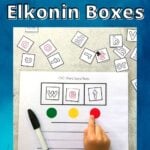All About Elkonin Boxes (Sound Boxes)
This post may contain affiliate links. As an Amazon affiliate, we earn from qualifying purchases.
Elkonin Boxes, also referred to as Sound Boxes, are an important tool used to help build sound awareness, letter-sound connections, and decoding and encoding skills in young students. Learn all about this simple instructional tool – what they are, why they work, and how to use them.
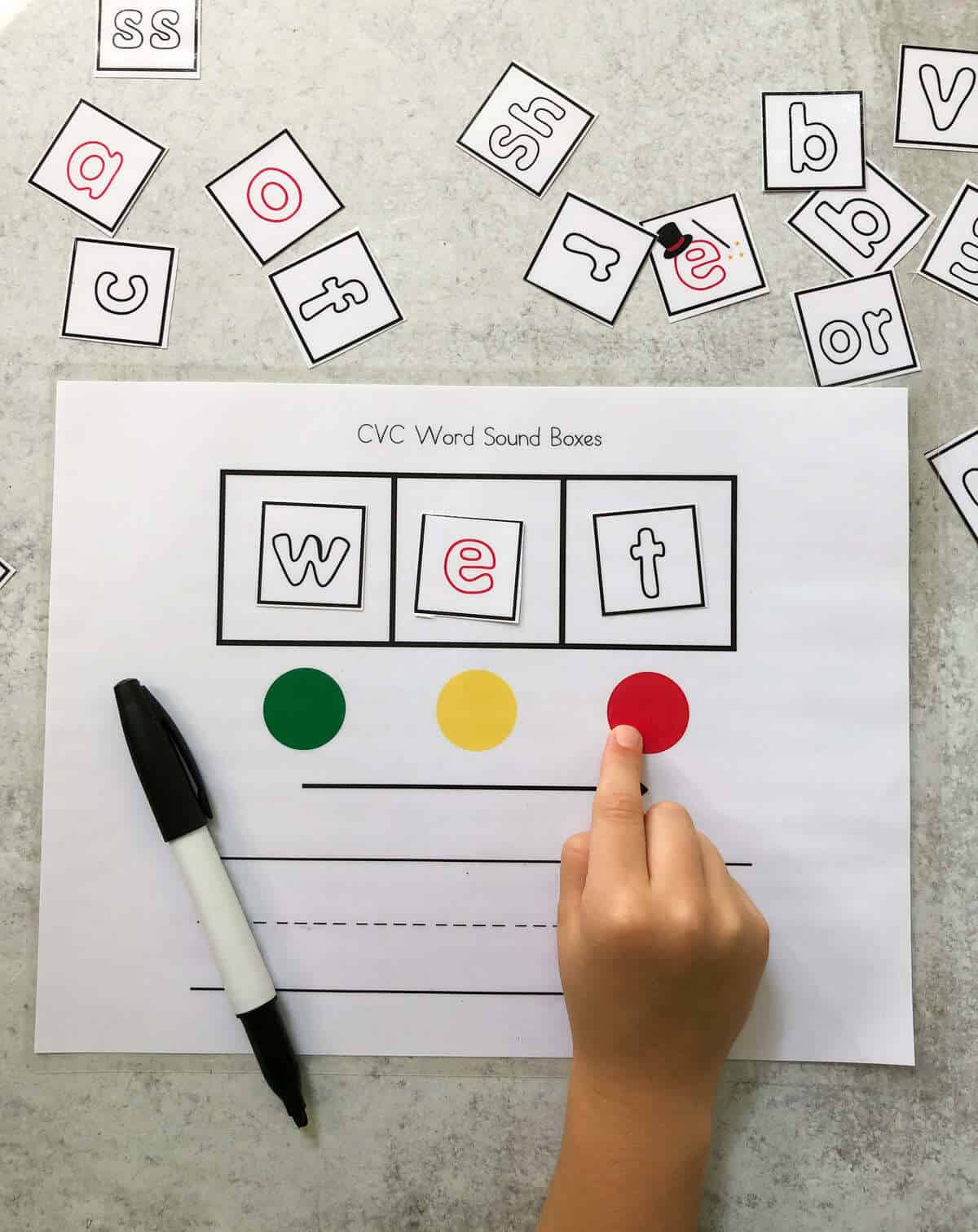
What Are Elkonin Boxes?
Elkonin boxes, also known as sound boxes, are used to build important literacy skills including phonemic awareness, letter-sound correspondences, and spelling.
👉 Sound boxes are a powerful learning tool because they take something that is only auditory (words we hear), and they give these words visual and kinesthetic properties.
👉 When you use Elkonin boxes, children can now HEAR, SEE, and TOUCH the sounds in words! Elkonin boxes turn sounds into a multimodal experience that can be understood in concrete terms.
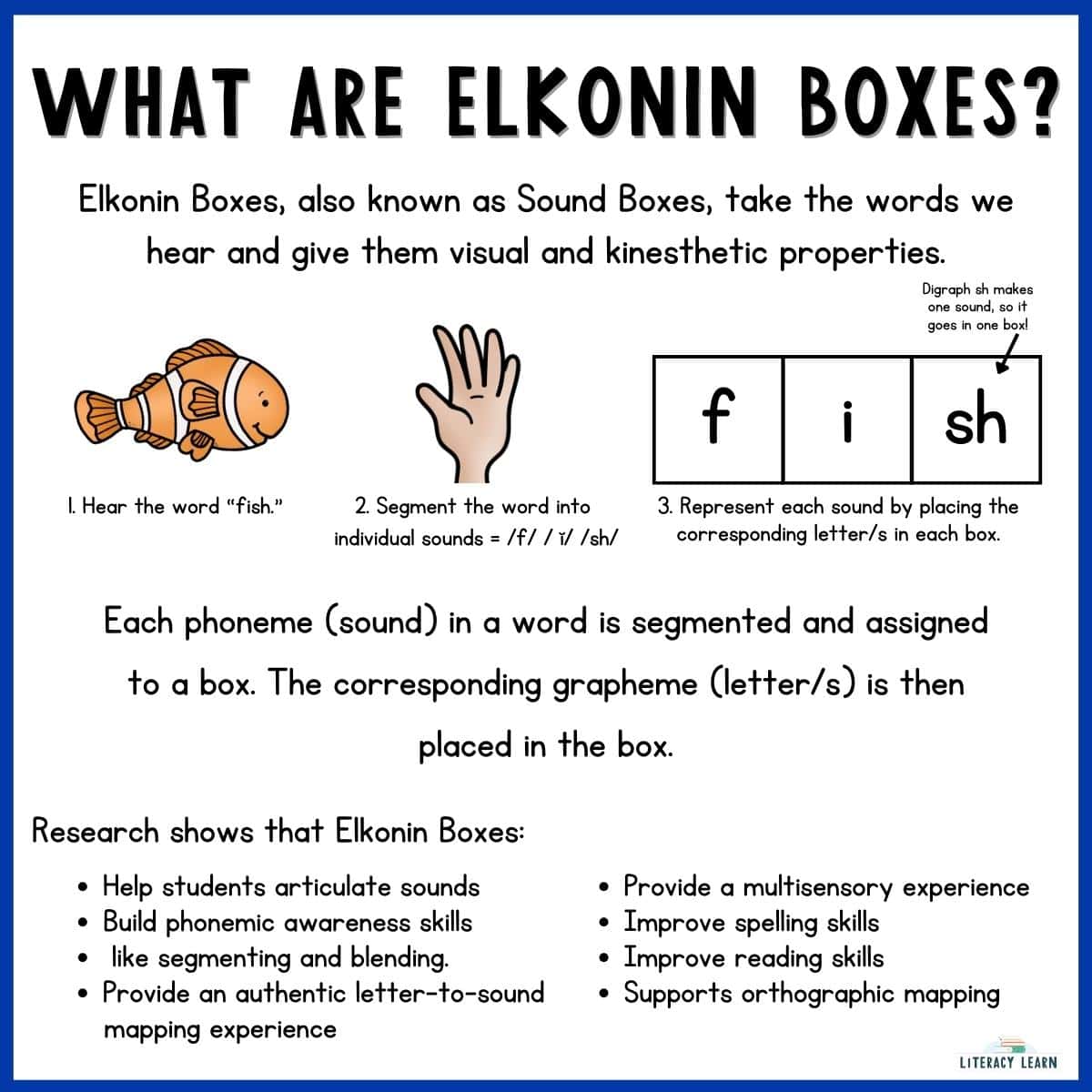
At the phonemic awareness level, Elkonin Boxes help kids to understand that words are made up of individual sounds. This may sound basic, but it is actually the most advanced of all phonological awareness skills and a necessary pre-reading skill!
Sound boxes also help build letter-sound correspondences as children match the phonemes (sounds) they hear in words with the corresponding graphemes (letters). 👉🏽 Read more about phonemes and graphemes!
Finally, they also help advance decoding and encoding skills. Our Word Ladders include Elkonin Boxes for this reason!
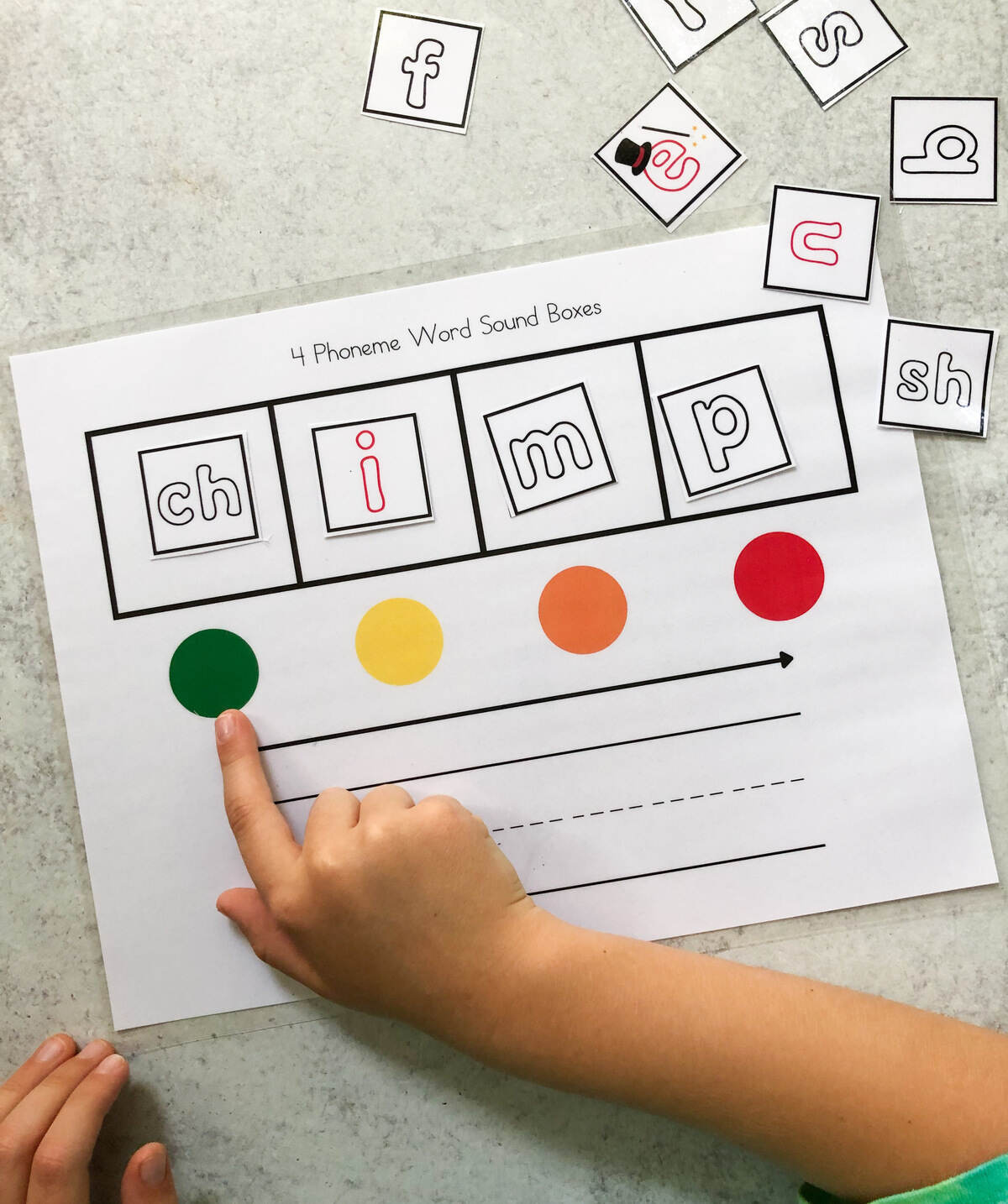
Elkonin boxes are often used for orthographic mapping, which requires children to segment and map the sounds they hear in words.
Ultimately, repeating this orthographic mapping process enables the brain to permanently store words for quick and instant retrieval, turning unfamiliar words and meanings into instantly recognized sight words.
Elkonin Boxes are strongly encouraged as part of Structured Literacy teaching. They have been used along with the Orton-Gillingham approach for decades.
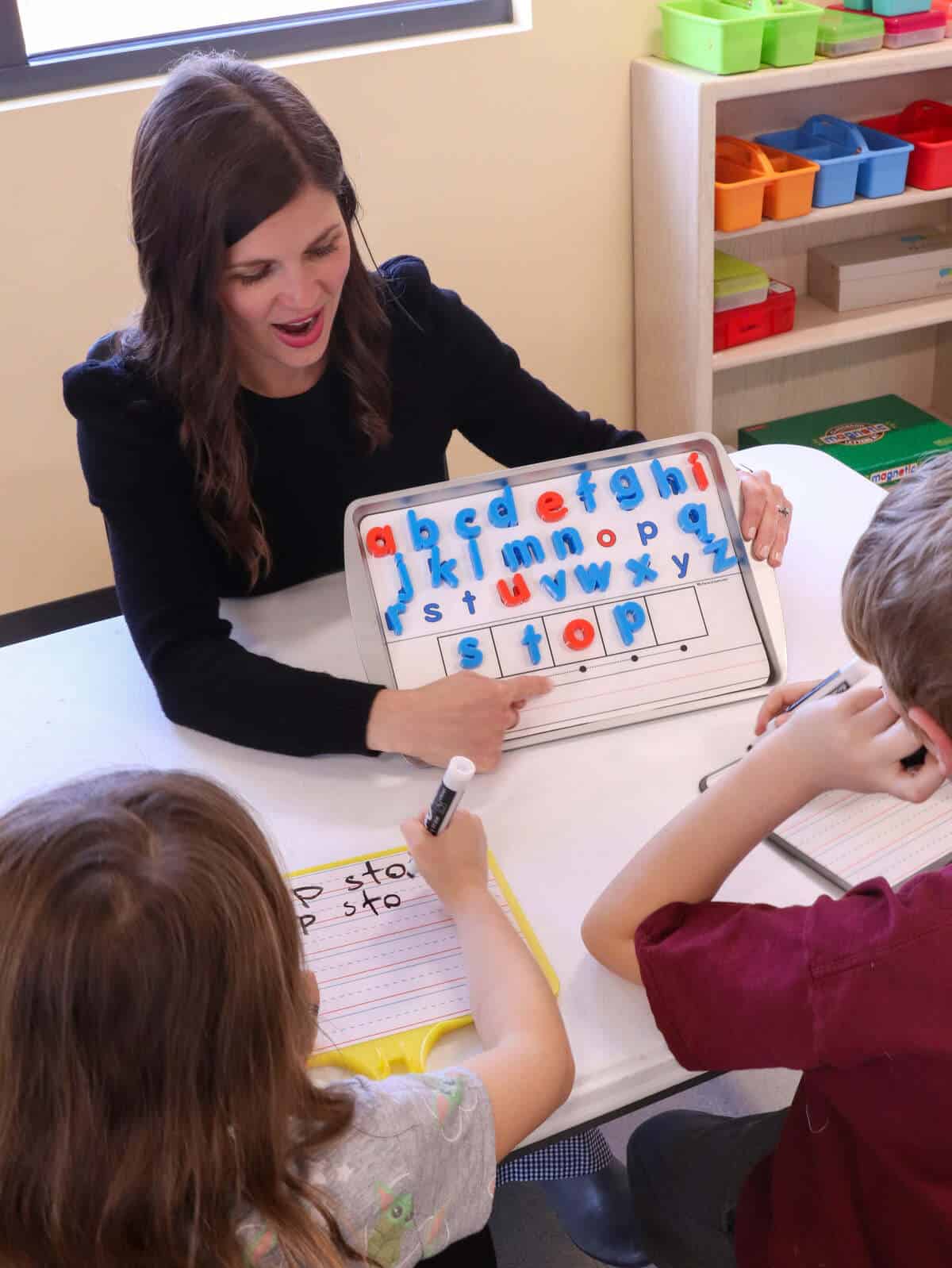
Research & Evidence
Did you know that sound boxes are research-based, highly effective, and have been used in literacy instruction for almost 60 years?
Ross and Joseph (2018) found that there was “evidence to support the use of word boxes for helping preschool to elementary students acquire phonemic awareness, letter-sound correspondences, and spelling.”
Additional research shows that Elkonin Boxes:
- Help students articulate sounds
- Build phoneme segmentation
- Build phonological awareness
- Provide an authentic letter-to-sound mapping experience
- Provide a multisensory experience
- Improve spelling skills
- Improve reading skills
If you don’t already use Elkonin boxes, you can start now with this easy and effective tool.
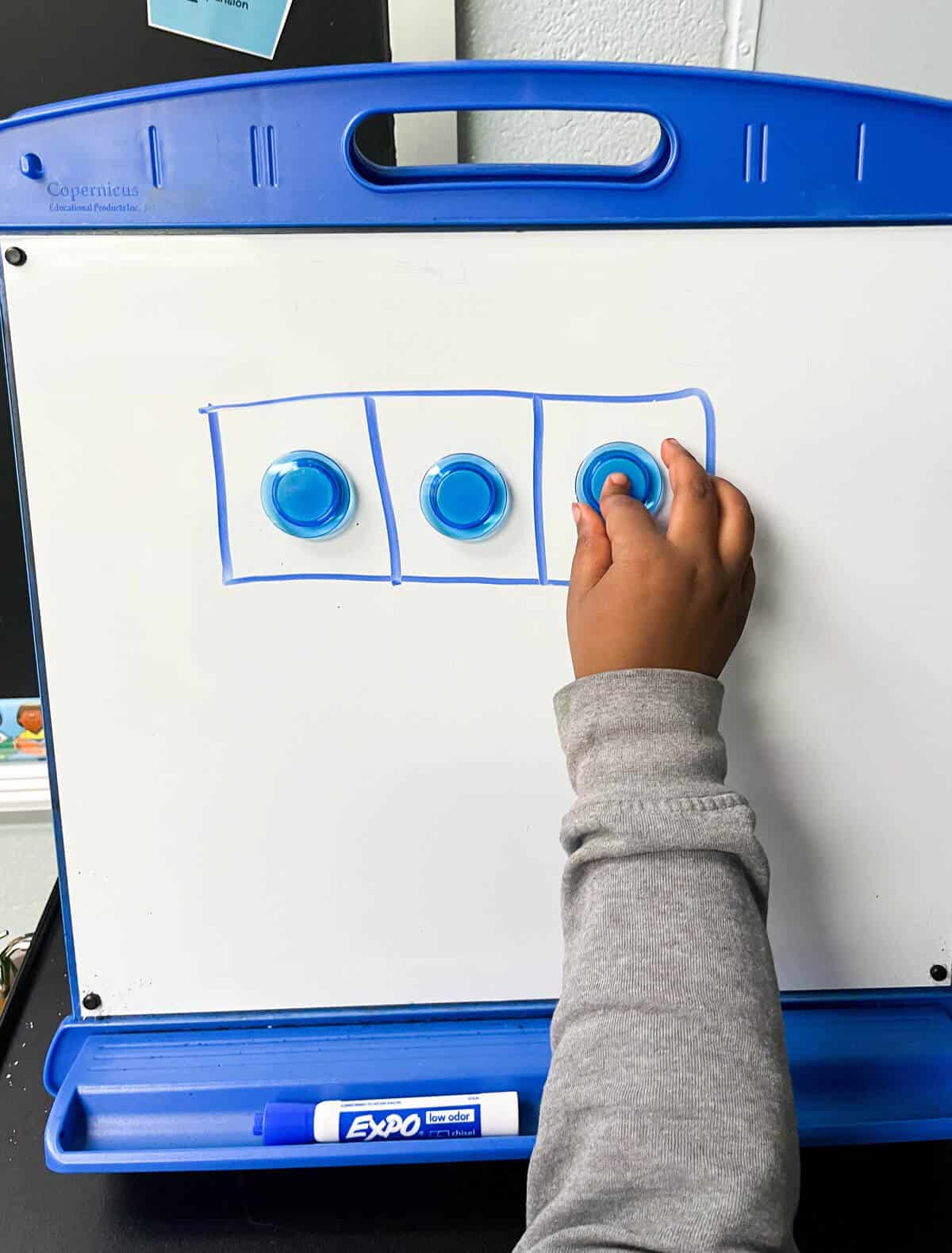
How to Use Elkonin Boxes
With our youngest students, we start by using chips or other non-alphabetic manipulatives in the Elkonin boxes, as pictured above.
- Children use the boxes to visually isolate each phoneme they hear in a word, pushing the manipulatives into each box as they make the sound.
If students know their letters and sounds, then Elkonin boxes can be used to make letter-sound connections by placing graphemes into the boxes.
- Teachers can expand it further and have students practice segmenting and blending those sounds to read and spell words.
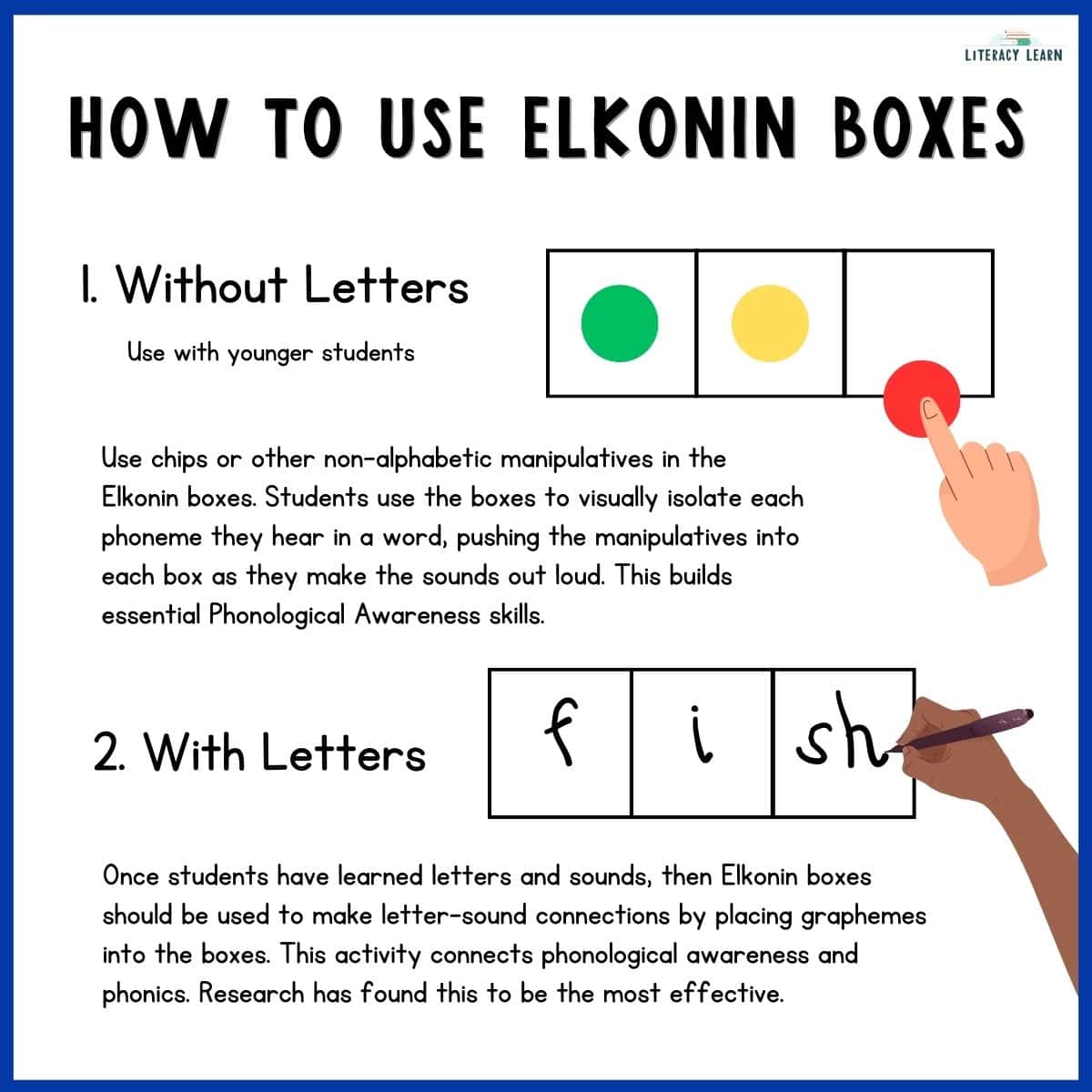
👉 IMPORTANT: Incorporate multi-sensory objects!
You can use the printable letters included in our sound boxes, or you can use foam letters or magnet letters, colored chips, coins, cheerios, or even play dough under each sound box! This makes each task much more meaningful.
Our car-themed sound boxes have “tires” that students can use in each box and a car that can be “driven” along the word.
FAQ & Quick Answers
Elkonin boxes are perfect for counting phonemes. The idea is one sound goes into one box. Remember, there are 44 sounds in the English language, and some phonemes can be made up of more than one letter that represents a grapheme. For example, /sh/ is one sound represented by two letters. Because it is one sound, the two letters go in one sound box.
Sound boxes are used to help students build a solid foundation in phonology. The International Dyslexia Association (IDA) defines phonology as “the study of sound structure of spoken words” and states it “is a critical element of Structured Language instruction.” Sound boxes also promote the orthographic mapping process, which is essential to increasing students known sight words to build fluent readers. To watch one excellent example of a teacher using this instructional strategy, you can watch this video.
Orthographic mapping is the process by which children make letter-sound connections until the brain stores the connections of the word and its meaning and it becomes an automatic sight word. All students should learn words through mapping, but it especially important for students with dyslexia.
Phonological awareness is an umbrella term for various skills related to the way the structure of words and language work. Included in phonological awareness is phonemic awareness, rhyme, syllables, alliteration, onset-rime, and words.
All students can benefit from using sound boxes. There is significant research to show that strategies that support phonological awareness are especially important for students who are at risk for reading difficulties or those with processing or other disabilities. *We also highly recommend this dyslexia and dysgraphia learning software (use code LM10 for 10% off).
References:
- Kelsey M. Ross & Laurice M. Joseph (2019) Effects of word boxes on improving students’ basic literacy skills: A literature review, Preventing School Failure: Alternative Education for Children and Youth, 63:1, 43-51, DOI: 10.1080/1045988X.2018.1480006
Related Posts to Learn More
Printable Elkonin Boxes
- Magnet Letter Baking Sheet Boards (pictured above)
- Elkonin Boxes with Printable Letters

